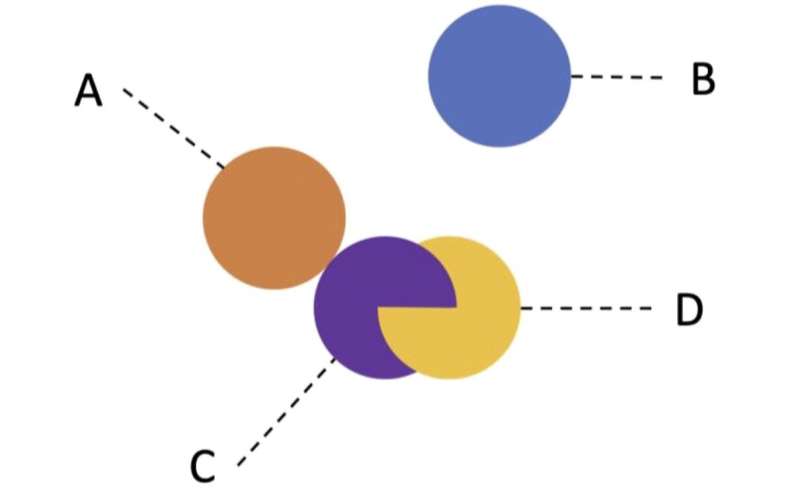How can researchers encourage the “right” level of multidisciplinarity to identify the best solutions to a problem? A team proposes a framework and common language for collaborations across disciplines. Credit: Christopher McComb, Carnegie Mellon University
From neuroscience to nanomanufacturing, fields that didn't exist a century ago evolved from the intersection of disciplines when scientists collaborated to solve challenges in new, innovative ways. With today's scientific advances and the lightning speed of technology, working together across boundaries has never been more enticing, or more challenging.
Different disciplines use different methods and theories, and there is no substitute for deep, disciplinary expertise. It's possible that combining efforts across disciplines might be less effective for the specific problem needing to be solved. How can researchers encourage the "right" level of multidisciplinarity to identify the best solutions?
A research team is exploring this topic through the lens of engineering design. With findings published in the Special Virtual Issue of the journal Design Studies, the team has proposed a framework and common language for all multidisciplinary interactions in all research fields.
"The framework can be applied to a variety of fields, providing a lingua franca to further the discussion of multidisciplinarity in design research and the creation of new disciplines," said Chris McComb, an associate professor of mechanical engineering at Carnegie Mellon University.
The proposed framework has a lower to upper spectrum, ranging from pure unidisciplinarity to generative multidisciplinarity. Research projects in theoretical mathematics are often an example of an isolated, unidisciplinary effort. Design, in contrast, lies toward the upper end.
"Design, by its nature, is multidisciplinary and ill-defined. It has 'fuzzy edges,'" McComb said. "It can combine physics, computer science, engineering, and psychology. It 'plays well' with a lot of different disciplines—it benefits from higher degrees of multidisciplinarity."
In generative multidisciplinarity, the focus is on co-adaptation. Each person learns about the other's methods, and then changes their own disciplinary methods to create something new. McComb admits that this is not easy but that the end result is worthy of that work.
"As we educate researchers to achieve this level of generative multidisciplinarity, it's going to take a fundamentally different approach," he said. "We're still going to help them become deep, disciplinary experts, but we need to make them aware of the value of this interdisciplinary effort—putting in the work in an interdisciplinary sense in order to do really transformational research."
Not all problems require the highest level of multidisciplinarity and there is value across the entire framework. For some projects, staying in the middle makes the most sense. An example is one person designing manufacturing parts and a colleague then 3D printing them. Each person is making strides to solve the problem within their discipline but they don't need to interact much or transform their fields to do it.
"A Lamborghini is great on a flat road, but you can't drive it to Mars," McComb said. "Sometimes research is like a flat road—we've solved similar problems before, so we can find success with well-known methods and theories, the Lamborghini. But other projects are like getting to Mars—you can't take a Lamborghini, so you need to create new ways of discovering and learning and researching. That's when higher levels of multidisciplinarity really shine."
"The goal is to revolutionize how we solve problems," he added. "Disciplines rise, fall, and evolve over time. Ideally, if we do it right, we're evolving disciplines to keep pace with the new problems that we're facing in the world."
More information: Christopher McComb, Kathryn Jablokow et al, A conceptual framework for multidisciplinary design research with example application to agent-based modeling, Design Studies (2021). DOI: 10.1016/j.destud.2021.101074
























